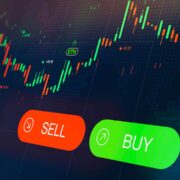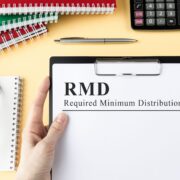Interest in sustainable investing is soaring, as more individuals end up being persuaded that making a favorable impact can be rewarding in addition to excellent for the world and society. Sadly, the Labor Department doesn’t believe these financial investments belong in your 401( k).
In June, the federal regulator proposed a rule that would restrict workplace retirement plans from investments that consist of environmental, social, and governance factors to consider. Widely known as ESG or socially responsible investing, this technique considers the sustainability of a company’s service practices.
The Labor Department states just returns, not company practices, must matter. But its proposal is unusual for a number of reasons, including its large range of challenges. The guideline has been knocked by a few of the world’s largest investment supervisors, including BlackRock ( BLK) – Get Report, Vanguard, State Street Global Advisors, and Fidelity, along with groups representing pension funds and 401( k) suppliers. Lots of say the rule would make it so tough or dangerous for work environment strategies to use ESGs that it efficiently eliminates them from factors to consider.
The U.S. Chamber of Commerce, the American Bankers Association, and the Investment Firm Institute, among other company interests, warned the guideline could raise expenses, considerably limit financial investment choices and increase the risk of claims.
“This is out of action with mainstream investing,” states Aron Szapiro, director of policy research for investment research study company Morningstar ( MORN) – Get Report. “This is quite unworkable and it’s realistically irregular.”
Far from acting in financiers’ benefits, as work environment strategy sponsors are required to do, the Labor Department appears identified to make retirement strategies restrict our choices and prospective returns.
Sustainable Investing Is Now Mainstream
The proposed guideline might have made sense 20 years ago, when so-called “socially accountable” investing consisted of a handful of funds that left out whole industries for social, political, or religious factors and often sacrificed returns in the process.
However socially accountable investing has long given that evolved into ” sustainable” investing. Instead of making the valuation, it seeks companies making a quantifiably favorable effect and steers clear of those that may position expensive threats.
This technique has spread quickly. By 2018, one out of every four dollars under professional management was invested using strategies that think about environmental, social, and business governance concerns, according to the US SIF Structure, a nonprofit that looks into sustainable financial investment. The number of shared funds that state they think about sustainability grew from 81 in 2018 to 562 in 2015, Morningstar found. BlackRock, the world’s biggest financial investment manager, revealed in January that it would integrate sustainability requirements into its financial investment decisions. 2 weeks later, State Street Global Advisors, the third-largest asset manager, said it would use its influence to ensure the business was recognizing and considering sustainability risks.
These investment managers have not become soft-headed do-gooders. They believe, with great proof, that they’ll improve risk-adjusted returns if they consider a company’s effect on the environment, possible labor and product liability problems, executive payment, and the efficiency and diversity of its board of directors, among other elements.
Supporters of ESG investing say such concerns “are fundamentally connected to the ability of an enterprise to continue to generate revenues or capital,” Szapiro states.
In fact, sustainable funds have exceeded conventional funds for the past couple of years and weathered the recession earlier this year with fewer losses, Morningstar found.

The Rule Would Enforce New Expenses on Plans
Screening out investments that utilize sustainability criteria would be an included cost that regulators don’t seem to have considered, Szapiro says.
“They state, ‘Well, we don’t think it’s gonna cost anything due to the fact that we think strategy sponsors merely will not use ESG funds,’ but that needs recognizing which ones are and are not,” Szapiro says.” That’s an big issue with an expense that is simply not attended to.”
Another issue was the proposition’s brief comment period. The Labor Department enabled feedback for just 30 days, closing talk about July 31. Normally, comments are accepted for 60, 90, or even 180 days, Szapiro states. The short timeline may suggest the department plans to carry out the guideline, despite overwhelmingly negative feedback.
You Still Have Alternatives for Sustainable Investing
If enacted, the rule may stymie the growth of sustainable investing techniques in retirement strategies that the department controls, which include 401( k) s and other specified contribution strategies in addition to a lot of traditional business pensions. The guideline won’t apply to public pensions, nevertheless, or to financial investments in specific accounts, including IRAs.
You also can purchase ESG funds if your 401( k) offers a “brokerage window,” which lets you invest beyond the plan’s typical financial investment lineup. These windows permit you to establish an account with an associated brokerage and select from a much larger variety of stocks, bonds, mutual funds, and other investments.
You can investigate alternatives utilizing the Forum for Sustainable and Accountable Financial Investment or an online broker’s shared fund screening tools. In addition, some automated financial investment platforms –– referred to as Robo-advisers –– provide ESG alternatives.
It undoubtedly would be easier if your 401( k) plan would do the screening and offer vetted choices. As long as the Labor Department seems figured out to avoid that, you’ll require to put in some work for a chance at much better returns.























Comments